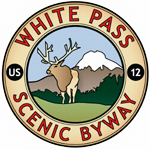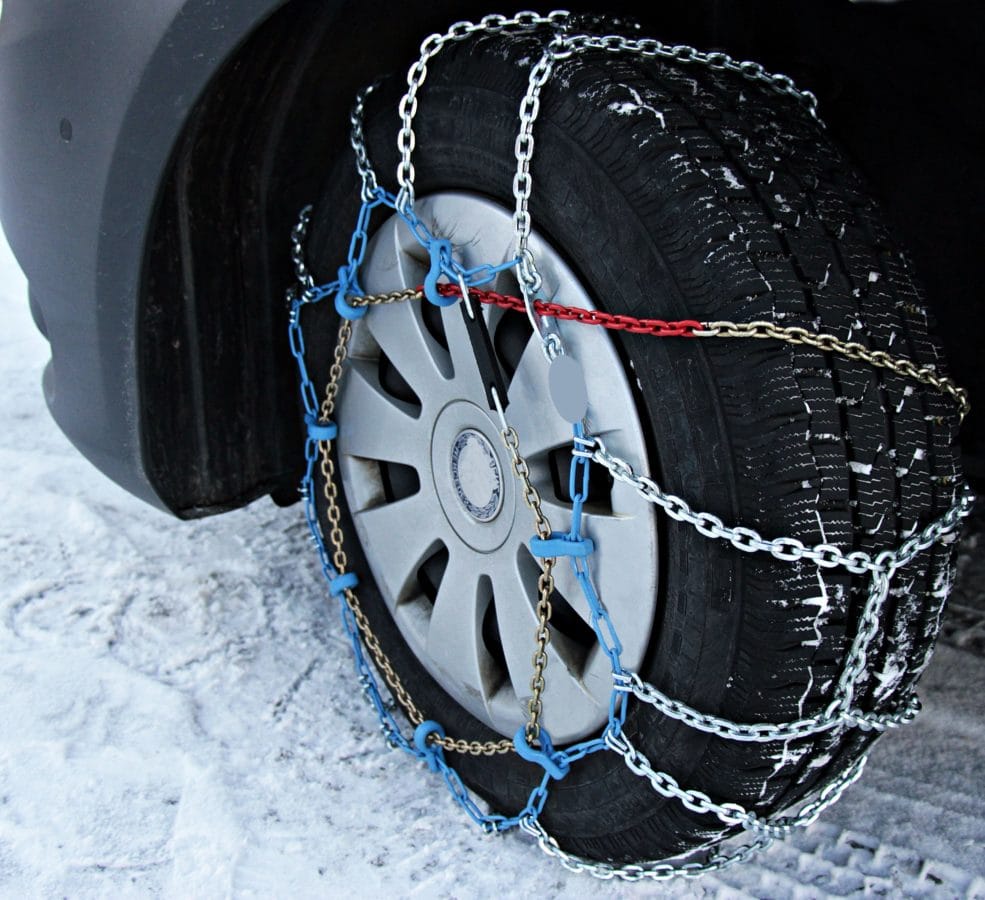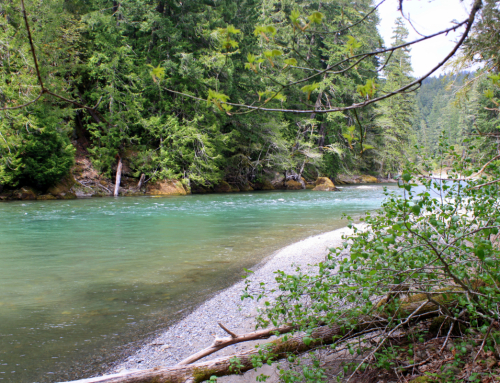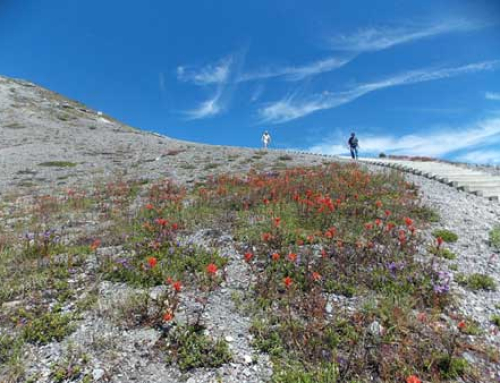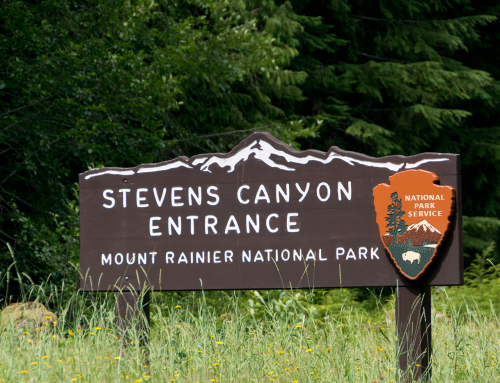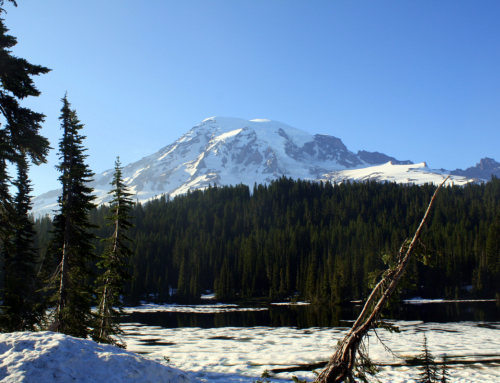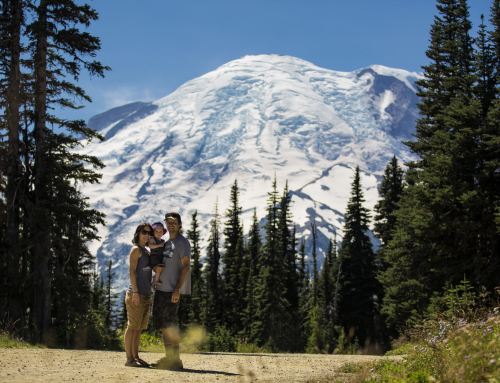PORTLAND, Ore., Jan. 9, 2023 — The winter recreation season is in full swing, and Bureau of Land Management and U.S. Forest Service officials remind everyone that adventures are better and safer when venturing out well prepared.
Recreation on public lands during winter presents many safety challenges. Recent surges in visitors saw winter travelers put themselves in unsafe situations. Vehicles have been stuck on snow-covered roads and in overcrowded parking areas. Illegal parking has even put public safety at risk by slowing traffic and blocking access routes for emergency vehicles
Carefully plan your expedition, whether it’s downhill skiing at a ski area, snowshoeing on open trails, or taking a scenic winter drive along the coast.
How to ensure success? Know before you go. Prepare for adventure and be ready to navigate changing situations—bring the 10 Essentials, pack a winter car kit, and check road and weather conditions before leaving home.
“Take the time to put together a kit of extra gear, including water, food, warm gloves and clothes, headlamps or flashlights, sleeping bag, and a fire starter,” said Shawnee Hinman, the recreation special uses program manager for the Forest Service’s Pacific Northwest Region.
Research how to get to a specific location, don’t rely on GPS alone.
“Navigation apps may take you on unmaintained roads in the winter,” said David Ballenger, BLM Oregon-Washington recreation lead. “Call ahead if you’re unfamiliar with road conditions, and always carry a paper map since many areas don’t have cell reception.”
Remember that travel conditions can vary between your house and your destination. It may be warm in Portland or Seattle, but cold and icy in nearby mountains.
“Have more gear than you are likely to need in case you have to wait out a storm or get stuck in the snow,” Hinman said.
DESTINATIONS: Winter recreation sites abound on public lands in the Pacific Northwest:
- Forest Service: Manages 24 million acres of public lands in the region with more than 3,000 outdoor recreation areas, facilities, and programs. View an interactive recreation opportunity map with links to the 11 national forests and grasslands in Oregon; five national forests in Washington, and the Columbia River Gorge National Scenic Area along the border of both states. Find more winter travel tips on the Pacific Northwest Winter Recreation Safety Tips webpage.
- Bureau of Land Management: Manages 16 million acres of public lands in Oregon and Washington. Outdoor winter recreation opportunities are plentiful across BLM, with great access to snow at higher elevations. Learn more by visiting https://www.blm.gov/visit.
- Sno-Parks in Oregon and Washington: Provide opportunities for general snow play like snowtubing and sledding, non-motorized activities like cross-country skiing and snowshoeing, and motorized activities like snowmobiling. Sno-Parks may be located on state or federal land, but a state-issued permit is required, which pays for snow removal and winter facilities maintenance.
- Sno-Park Parking Permits: One-day or seasonal parking permits can be purchased online or through authorized vendors in Oregon and Washington (you must purchase a pass valid for the state you plan to use it in; Oregon and Washington passes are not interchangeable). Display your pass on your vehicle dashboard, visible through the lower-left corner of your windshield.
SAFETY GUIDANCE: Gauge your winter safety awareness and learn how to #RecreateResponsibly.
Preparations, for Weather and More
- Research the weather forecast prior to your trip. Weather conditions can vary greatly, especially in the mountain passes. The National Weather Service website is a good place to start. Also check NOAA. Use SNOTEL to view daily and seasonal snow data, by station or basin.
- Ensure your snow play activity is permitted at your destination. Remember that snow play is not allowed adjacent to freeway overpasses, exits, and onramps.
- Plan to arrive early to your destination and avoid peak hours, as parking lots fill up quickly. Consider arriving in the afternoon when the first wave of visitors may be leaving. If your destination is unavailable, have a plan B and a plan C.
- Let someone who isn’t traveling with you or your group know where you’re going and when you expect to return.
Traveling
- Check road conditions before to heading to your destination. Review Oregon’s tripcheck.com with live webcams or Washington’s real-time travel data.
- Check for avalanche conditions through the Northwest Avalanche Center.
- Equip your vehicle for winter travel—with tire chains, shovel, first aid kit, blankets, and flashlights. Traveling through mountain passes may require tire chains; make sure your chains fit your vehicle.
- Travel on a full tank of gas and stop frequently for fill-ups; keep your tank at least half-filled as you travel. Fuel stations can be few and far between in some areas. Plan your next stop before you leave your current one.
- Most BLM and Forest Service roads are not maintained for winter travel. Many roads close for the season upon the first significant snowfall or on Dec. 1—whichever comes first.
- If you find yourself stranded, stay in your car, put on your flashers, call for help, and wait until help arrives.
- Park in authorized areas, only. Do not park along highways! Illegally parked vehicles block emergency vehicle access and interfere with snow removal.
Gear
- Dress in layers of warm, waterproof clothing, and pack extra layers.
- Make sure you have the right gear in your car, including an emergency kit with extra food and water in case you become stranded. If going into the backcountry, carry avalanche beacons.
- Bring a paper map. Don’t rely on your phone for navigation as coverage may be unavailable. Online services, such as Google Maps and Apple Maps, may suggest a route that’s closed by snow. You can download USGS and USFS maps to your electronic device using an app, such as Avenza, but you may not be able to recharge your device if you are stranded.
